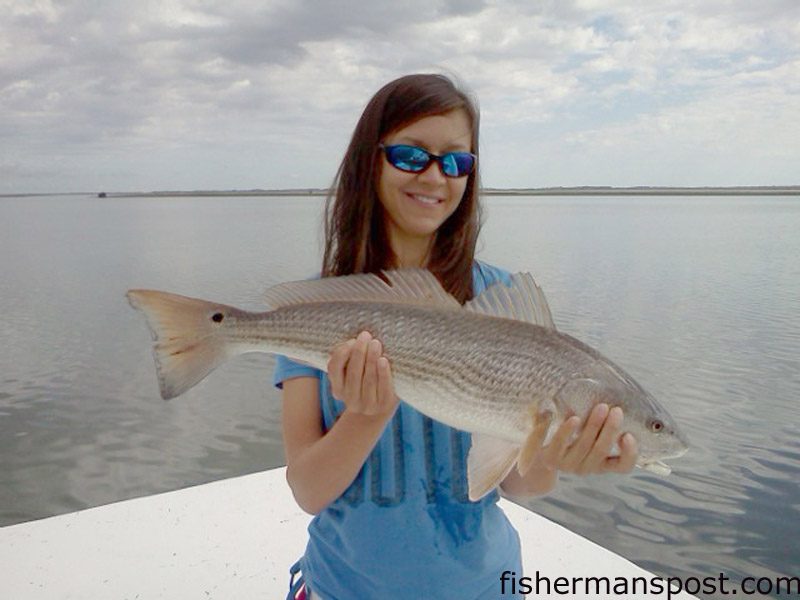Swansboro May 10, 2012

Buck Parsons and Renny Bice with a quartet of flounder (the largest a 23", 5 .7 lb. citation) that bit live finger mullet around some Swansboro-area docks while they were fishing with Capt. Dale Collins of Wild Side Charters out of Emerald Isle.
Rob, of Sandbar Safari Charters, reports that red drum are still feeding in the bays and marshes around Swansboro. There are plenty of finger mullet and small shrimp working through the marshes, and the reds have been biting topwater plugs well on most days lately. When they won’t come up top, live baits and Gulps on light Carolina rigs, jigheads, or fished beneath popping corks will tempt them to bite.
The flounder action is getting better inshore, with decent numbers of fish coming from the deeper channels and structure along the ICW. Live baits or Gulps on heavier jigheads than anglers are using for the reds will attract attention from the flatfish. The nearshore flounder bite is also turning on, with the best action 8-12 miles off Bogue Inlet lately. Dropping 2 oz. bucktails tipped with Gulp baits to structure in that range is the best way to put the flounder in the boat.
Sheepshead and black drum are taking up feeding positions around the area’s dock and bridge pilings. Fiddler crabs are top baits for both, and anglers should have little trouble gathering some on the mud flats around low tide.
Good numbers of spanish mackerel and bluefish are feeding in the inlet and just offshore. Some larger spanish mackerel (to 5+ lbs.) should be showing up in the next few weeks. Trolling Clarkspoons and casting metal lures will produce action with the smaller fish, while live baits are the best bet for the big spaniards.
Robbie, of Hall’Em In Charters, reports that there are still schools of red drum feeding in the bays behind the local barrier islands (most mid-upper slot fish). The topwater bite has been excellent lately, but live baits and Gulps will produce plenty of action when they’re not feeding on the surface.
Inshore flounder fishing continues to improve, and anglers found the best flatfish action while working creekmouths on falling tides last week. Gulp Jerkshads or live mud minnows on jigheads are top choices for the flatfish.
The flounder bite has been even better at the nearshore live bottoms and artificial reefs. Large bucktails tipped with Gulp baits are the way to go for the ocean flounder.
Some speckled trout are feeding in the same areas (though most are smaller). Fishing the higher falling tides offers anglers their best shot at the specks.
Bluefish are all over the inshore and nearshore waters (including some big choppers). The big blues are even feeding alongside reds on the flats, where they’ll readily take topwater plugs (and virtually any other lures or baits).

Christie Seiler, of Morehead City, with a 26” red drum that bit a topwater plug near Beaufort while she was fishing with Josh Fulcher.
Rich, of The Reel Outdoors, reports that anglers are catching some bluefish and spanish mackerel while working plugs from the pier and trolling small spoons from boats.
Some larger spanish are a bit further offshore and should be working their way to the beaches shortly. Live baits are better choices for the bigger spaniards.
Flounder are feeding at nearshore structure, and a Gulp-tipped bucktail will tempt them to bite. The flatfish bite has also been good around the docks and other structure inshore. They’ve been feeding along the surf zone as well, and Gulps or small live baits will attract plenty of attention inshore or along the beachfront.
Cobia showed up last week around Cape Lookout, so it shouldn’t be long until anglers are seeing some closer to Bogue Inlet.
Offshore, bottom fishermen have found solid action with grouper, beeliners, pinkies, and more at bottom structure in around 100’ of water.
Trollers are still finding a solid wahoo bite along with some dolphin around the Big Rock.
JoAnne, of Bogue Inlet Pier, reports that bottom fishermen are hooking some black drum, sea mullet, white perch, pigfish, and more on double-hook rigs baited with shrimp.
Plug casters are connecting with some bluefish while working Gotchas from the pier.
